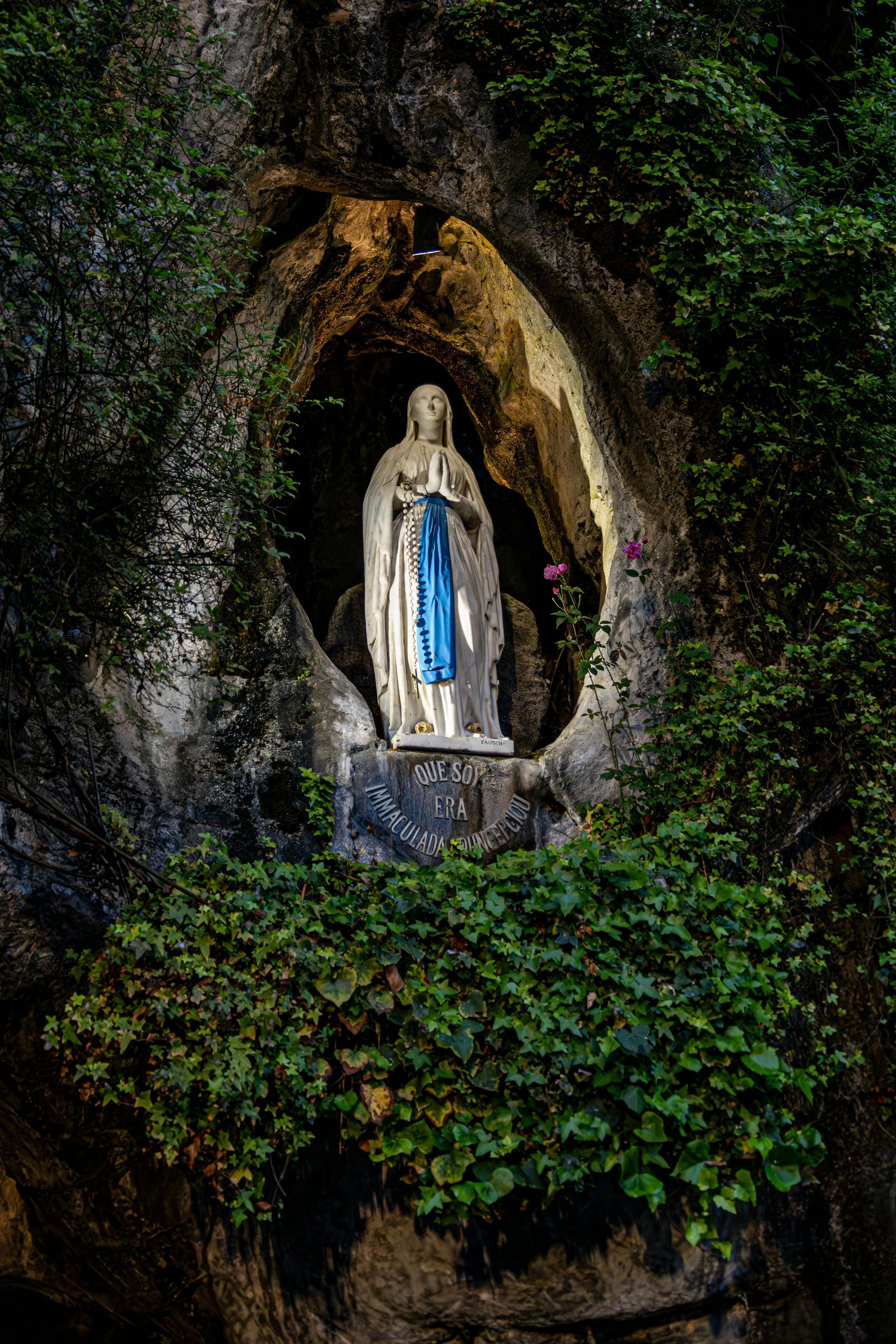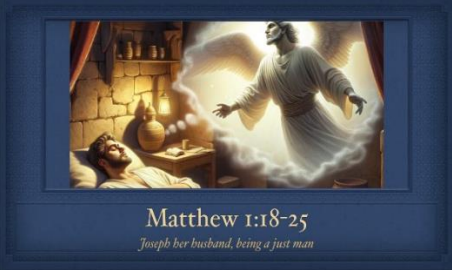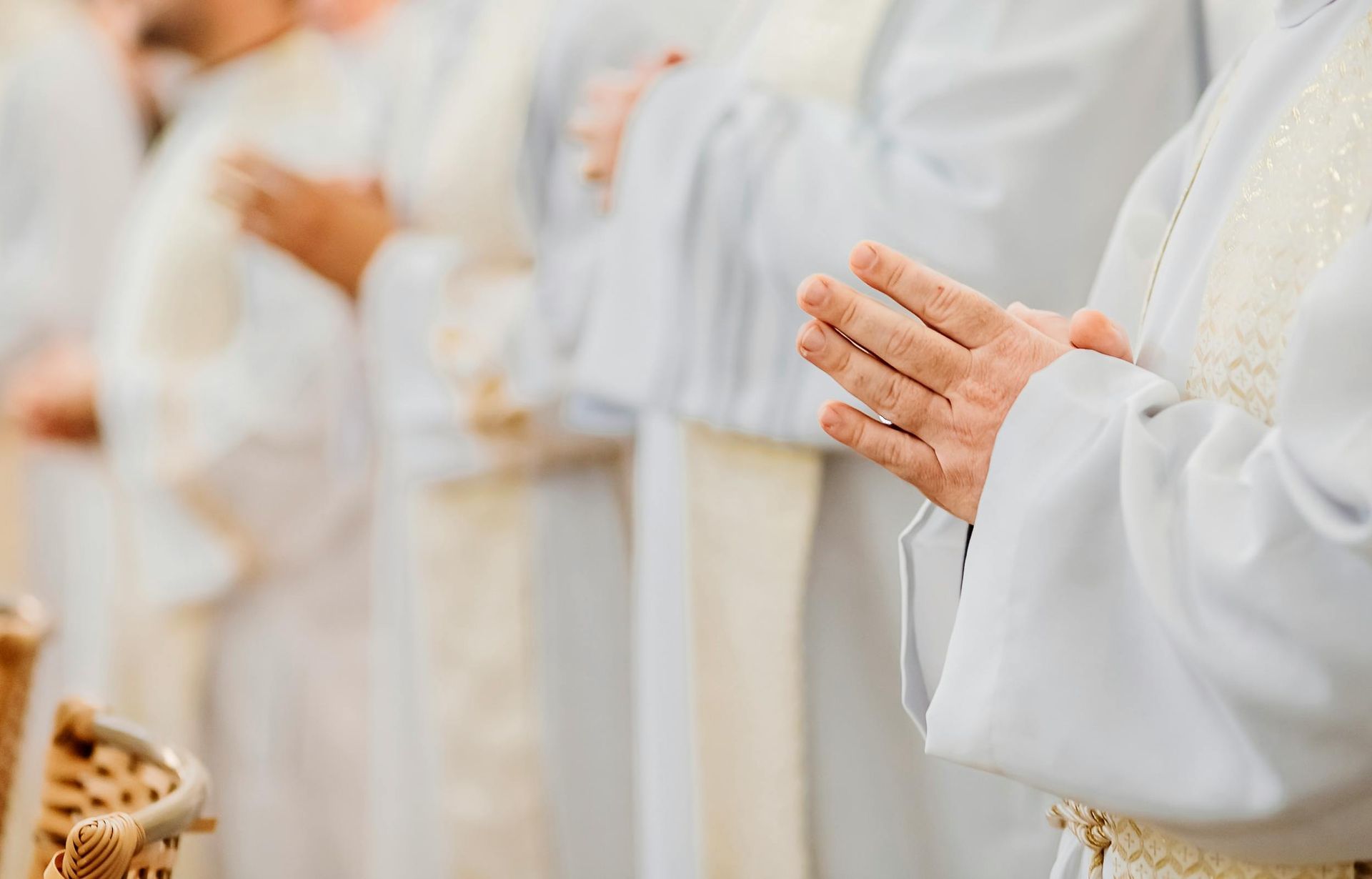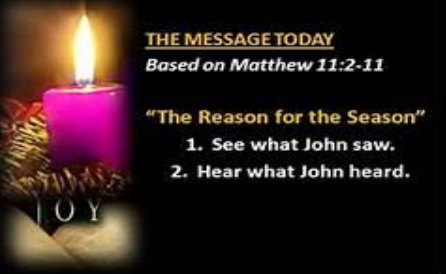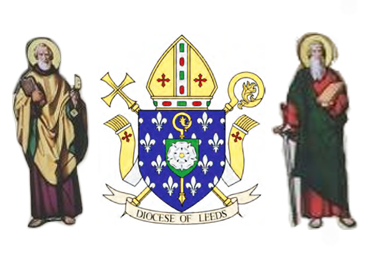THE GOSPEL ACCORDING TO MATTHEW
The position of the Gospel according to Matthew as the first of the four gospels in the New Testament reflects both the view that it was the first to be written, a view that goes back to the late second century A.D., and the esteem in which it was held by the church; no other was so frequently quoted in the noncanonical literature of earliest Christianity. Although the majority of scholars now reject the opinion about the time of its composition, the high estimation of this work remains. The reason for that becomes clear upon study of the way in which Matthew presents his story of Jesus, the demands of Christian discipleship, and the breaking-in of the new and final age through the ministry but particularly through the death and resurrection of Jesus.
The gospel begins with a narrative prologue ( Mt 1:1 – 2:23 ), the first part of which is a genealogy of Jesus starting with Abraham, the father of Israel ( Mt 1:1 – 17 ). Yet at the beginning of that genealogy Jesus is designated as “the son of David, the son of Abraham” ( Mt 1:1 ). The kingly ancestor who lived about a thousand years after Abraham is named first, for this is the genealogy of Jesus Christ, the Messiah, the royal anointed one ( Mt 1:16 ). In the first of the episodes of the infancy narrative that follow the genealogy, the mystery of Jesus’ person is declared. He is conceived of a virgin by the power of the Spirit of God ( Mt 1:18 – 25 ). The first of the gospel’s fulfillment citations, whose purpose it is to show that he was the one to whom the prophecies of Israel were pointing, occurs here ( Mt 1:23 ): he shall be named Emmanuel, for in him God is with us.
The announcement of the birth of this newborn king of the Jews greatly troubles not only King Herod but all Jerusalem ( Mt 2:1 – 3 ), yet the Gentile magi are overjoyed to find him and offer him their homage and their gifts ( Mt 2:10 – 11 ). Thus his ultimate rejection by the mass of his own people and his acceptance by the Gentile nations is foreshadowed. He must be taken to Egypt to escape the murderous plan of Herod. By his sojourn there and his subsequent return after the king’s death he relives the Exodus experience of Israel. The words of the Lord spoken through the prophet Hosea, “Out of Egypt I called my son,” are fulfilled in him ( Mt 2:15 ); if Israel was God’s son, Jesus is so in a way far surpassing the dignity of that nation, as his marvelous birth and the unfolding of his story show (see Mt 3:17 ; 4:1 – 11 ; 11:27 ; 14:33 ; 16:16 ; 27:54 ). Back in the land of Israel, he must be taken to Nazareth in Galilee because of the danger to his life in Judea, where Herod’s son Archelaus is now ruling ( Mt 2:22 – 23 ). The sufferings of Jesus in the infancy narrative anticipate those of his passion, and if his life is spared in spite of the dangers, it is because his destiny is finally to give it on the cross as “a ransom for many” ( 20:28 ). Thus the word of the angel will be fulfilled, “…he will save his people from their sins” ( Mt 1:21 ; cf. Mt 26:28 ).
In Mt 4:12 Matthew begins his account of the ministry of Jesus, introducing it by the preparatory preaching of John the Baptist ( Mt 3:1 – 12 ), the baptism of Jesus that culminates in God’s proclaiming him his “beloved Son” ( Mt 3:13 – 17 ), and the temptation in which he proves his true sonship by his victory over the devil’s attempt to deflect him from the way of obedience to the Father ( Mt 4:1 – 11 ). The central message of Jesus’ preaching is the coming of the kingdom of heaven and the need for repentance, a complete change of heart and conduct, on the part of those who are to receive this great gift of God ( Mt 4:17 ). Galilee is the setting for most of his ministry; he leaves there for Judea only in Mt 19:1 , and his ministry in Jerusalem, the goal of his journey, is limited to a few days ( Mt 21:1 – 25:46 ).
In this extensive material there are five great discourses of Jesus, each concluding with the formula “When Jesus finished these words” or one closely similar ( Mt 7:28 ; 11:1 ; 13:53 ; 19:1 ; 26:1 ). These are an important structure of the gospel. In every case the discourse is preceded by a narrative section, each narrative and discourse together constituting a “book” of the gospel. The discourses are, respectively, the “Sermon on the Mount” ( Mt 5:3 – 7:27 ), the missionary discourse ( Mt 10:5 – 42 ), the parable discourse ( Mt 13:3 – 52 ), the “church order” discourse ( Mt 18:3 – 35 ), and the eschatological discourse ( Mt 24:4 – 25:46 ). In large measure the material of these discourses came to Matthew from his tradition, but his work in modifying and adding to what he had received is abundantly evident. No other evangelist gives the teaching of Jesus with such elegance and order as he.
In the “Sermon on the Mount” the theme of righteousness is prominent, and even at this early stage of the ministry the note of opposition is struck between Jesus and the Pharisees, who are designated as “the hypocrites” ( Mt 6:2 , 5 , 16 ). The righteousness of his disciples must surpass that of the scribes and Pharisees; otherwise, in spite of their alleged following of Jesus, they will not enter into the kingdom of heaven ( Mt 5:20 ). Righteousness means doing the will of the heavenly Father ( Mt 7:21 ), and his will is proclaimed in a manner that is startling to all who have identified it with the law of Moses. The antitheses of the Sermon ( Mt 5:21 – 48 ) both accept ( Mt 5:21 – 30 , 43 – 48 ) and reject ( Mt 5:31 – 42 ) elements of that law, and in the former case the understanding of the law’s demands is deepened and extended. The antitheses are the best commentary on the meaning of Jesus’ claim that he has come not to abolish but to fulfill the law ( Mt 5:17 ). What is meant by fulfillment of the law is not the demand to keep it exactly as it stood before the coming of Jesus, but rather his bringing the law to be a lasting expression of the will of God, and in that fulfillment there is much that will pass away. Should this appear contradictory to his saying that “until heaven and earth pass away” not even the smallest part of the law will pass ( Mt 5:18 ), that time of fulfillment is not the dissolution of the universe but the coming of the new age, which will occur with Jesus’ death and resurrection. While righteousness in the new age will continue to mean conduct that is in accordance with the law, it will be conduct in accordance with the law as expounded and interpreted by Jesus (cf. Mt 28:20 , “…all that I have commanded you”).
Though Jesus speaks harshly about the Pharisees in the Sermon, his judgment is not solely a condemnation of them. The Pharisees are portrayed as a negative example for his disciples, and his condemnation of those who claim to belong to him while disobeying his word is no less severe ( Mt 7:21 – 23 , 26 – 27 ).
In Mt 4:23 a summary statement of Jesus’ activity speaks not only of his teaching and proclaiming the gospel but of his “curing every disease and illness among the people”; this is repeated almost verbatim in Mt 9:35. The narrative section that follows the Sermon on the Mount ( Mt 8:1 – 9:38 ) is composed principally of accounts of those merciful deeds of Jesus, but it is far from being simply a collection of stories about miraculous cures. The nature of the community that Jesus will establish is shown; it will always be under the protection of him whose power can deal with all dangers ( Mt 8:23 – 27 ), but it is only for those who are prepared to follow him at whatever cost ( Mt 8:16 – 22 ), not only believing Israelites but Gentiles who have come to faith in him ( Mt 8:10 – 12 ). The disciples begin to have some insight, however imperfect, into the mystery of Jesus’ person. They wonder about him whom “the winds and the sea obey” ( Mt 8:27 ), and they witness his bold declaration of the forgiveness of the paralytic’s sins ( Mt 9:2 ). That episode of the narrative moves on two levels. When the crowd sees the cure that testifies to the authority of Jesus, the Son of Man, to forgive sins ( Mt 9:6 ), they glorify God “who had given such authority to human beings” ( Mt 9:8 ). The forgiveness of sins is now not the prerogative of Jesus alone but of “human beings,” that is, of the disciples who constitute the community of Jesus, the church. The ecclesial character of this narrative section could hardly be more plainly indicated.
The end of the section prepares for the discourse on the church’s mission ( Mt 10:5 – 42 ). Jesus is moved to pity at the sight of the crowds who are like sheep without a shepherd ( Mt 9:36 ), and he sends out the twelve disciples to make the proclamation with which his own ministry began, “The kingdom of heaven is at hand” ( Mt 10:7 ; cf. Mt 4:17 ), and to drive out demons and cure the sick as he has done ( Mt 10:1 ). Their mission is limited to Israel ( Mt 10:5 – 6 ) as Jesus’ own was ( Mt 15:24 ), yet in Mt 15:16 that perspective broadens and the discourse begins to speak of the mission that the disciples will have after the resurrection and of the severe persecution that will attend it ( Mt 10:18 ). Again, the discourse moves on two levels: that of the time of Jesus and that of the time of the church.
The narrative section of the third book ( Mt 11:2 – 12:50 ) deals with the growing opposition to Jesus. Hostility toward him has already been manifested ( Mt 8:10 ; 9:3 , 10 – 13 , 34 ), but here it becomes more intense. The rejection of Jesus comes, as before, from Pharisees, who take “counsel against him to put him to death” ( Mt 12:14 ) and repeat their earlier accusation that he drives out demons because he is in league with demonic power ( Mt 12:22 – 24 ). But they are not alone in their rejection. Jesus complains of the lack of faith of “this generation” of Israelites ( Mt 11:16 – 19 ) and reproaches the towns “where most of his mighty deeds had been done” for not heeding his call to repentance ( Mt 11:20 – 24 ). This dark picture is relieved by Jesus’ praise of the Father who has enabled “the childlike” to accept him ( Mt 11:25 – 27 ), but on the whole the story is one of opposition to his word and blindness to the meaning of his deeds. The whole section ends with his declaring that not even the most intimate blood relationship with him counts for anything; his only true relatives are those who do the will of his heavenly Father ( Mt 12:48 – 50 ).
The narrative of rejection leads up to the parable discourse ( Mt 13:3 – 52 ). The reason given for Jesus’ speaking to the crowds in parables is that they have hardened themselves against his clear teaching, unlike the disciples to whom knowledge of “the mysteries of the kingdom has been granted” ( Mt 13:10 – 16 ). In Mt 13:36 he dismisses the crowds and continues the discourse to his disciples alone, who claim, at the end, to have understood all that he has said ( Mt 13:51 ). But, lest the impression be given that the church of Jesus is made up only of true disciples, the explanation of the parable of the weeds among the wheat ( Mt 13:37 – 43 ), as well as the parable of the net thrown into the sea “which collects fish of every kind” ( Mt 13:47 – 49 ), shows that it is composed of both the righteous and the wicked, and that separation between the two will be made only at the time of the final judgment.
In the narrative that constitutes the first part of the fourth book of the gospel ( Mt 13:54 – 17:27 ), Jesus is shown preparing for the establishment of his church with its teaching authority that will supplant the blind guidance of the Pharisees ( Mt 15:13 – 14 ), whose teaching, curiously said to be that of the Sadducees also, is repudiated by Jesus as the norm for his disciples ( Mt 16:6 , 11 – 12 ). The church of Jesus will be built on Peter ( Mt 16:18 ), who will be given authority to bind and loose on earth, an authority whose exercise will be confirmed in heaven ( Mt 16:19 ). The metaphor of binding and loosing has a variety of meanings, among them that of giving authoritative teaching. This promise is made to Peter directly after he has confessed Jesus to be the Messiah, the Son of the living God ( Mt 16:16 ), a confession that he has made as the result of revelation given to him by the heavenly Father ( Mt 16:17 ); Matthew’s ecclesiology is based on his high christology.
Directly after that confession Jesus begins to instruct his disciples about how he must go the way of suffering and death ( Mt 16:21 ). Peter, who has been praised for his confession, protests against this and receives from Jesus the sharpest of rebukes for attempting to deflect Jesus from his God-appointed destiny. The future rock upon whom the church will be built is still a man of “little faith” (see Mt 14:31 ). Both he and the other disciples must know not only that Jesus will have to suffer and die but that they too will have to follow him on the way of the cross if they are truly to be his disciples ( Mt 16:24 – 25 ).
The discourse following this narrative ( Mt 18:1 – 35 ) is often called the “church order” discourse, although that title is perhaps misleading since the emphasis is not on the structure of the church but on the care that the disciples must have for one another in respect to guarding each other’s faith in Jesus ( Mt 18:6 – 7 ), to seeking out those who have wandered from the fold ( Mt 18:10 – 14 ), and to repeated forgiving of their fellow disciples who have offended them ( Mt 18:21 – 35 ). But there is also the obligation to correct the sinful fellow Christian and, should one refuse to be corrected, separation from the community is demanded ( Mt 18:15 – 18 ).
The narrative of the fifth book ( Mt 19:1 – 23:39 ) begins with the departure of Jesus and his disciples from Galilee for Jerusalem. In the course of their journey Jesus for the third time predicts the passion that awaits him at Jerusalem and also his resurrection ( Mt 20:17 – 19 ). At his entrance into the city he is hailed as the Son of David by the crowds accompanying him ( Mt 21:9 ). He cleanses the temple ( Mt 21:12 – 17 ), and in the few days of his Jerusalem ministry he engages in a series of controversies with the Jewish religious leaders ( Mt 21:23 – 27 ; 22:15 – 22 , 23 – 33 , 34 – 40 , 41 – 46 ), meanwhile speaking parables against them ( Mt 21:28 – 32 , 33 – 46 ), against all those Israelites who have rejected God’s invitation to the messianic banquet ( Mt 22:1 – 10 ), and against all, Jew and Gentile, who have accepted but have shown themselves unworthy of it ( Mt 22:11 – 14 ). Once again, the perspective of the evangelist includes not only the time of Jesus’ ministry but that of the preaching of the gospel after his resurrection. The narrative culminates in Jesus’ denunciation of the scribes and Pharisees, reflecting not only his own opposition to them but that of Matthew’s church ( Mt 23:1 – 36 ), and in Jesus’ lament over Jerusalem ( Mt 23:37 – 39 ).
In the discourse of the fifth book ( Mt 24:1 – 25:46 ), the last of the great structural discourses of the gospel, Jesus predicts the destruction of the temple and his own final coming. The time of the latter is unknown ( Mt 24:36 , 44 ), and the disciples are exhorted in various parables to live in readiness for it, a readiness that entails faithful attention to the duties of the interim period ( Mt 24:45 – 25:30 ). The coming of Jesus will bring with it the great judgment by which the everlasting destiny of all will be determined ( Mt 25:31 – 46 ).
The story of Jesus’ passion and resurrection ( Mt 26:1 – 28:20 ), the climax of the gospel, throws light on all that has preceded. In Matthew “righteousness” means both the faithful response to the will of God demanded of all to whom that will is announced and also the saving activity of God for his people (see Mt 3:15 ; 5:6 ; 6:33 ). The passion supremely exemplifies both meanings of that central Matthean word. In Jesus’ absolute faithfulness to the Father’s will that he drink the cup of suffering ( Mt 26:39 ), the incomparable model for Christian obedience is given; in his death “for the forgiveness of sins” ( Mt 26:28 ), the saving power of God is manifested as never before.
Matthew’s portrayal of Jesus in his passion combines both the majestic serenity of the obedient Son who goes his destined way in fulfillment of the scriptures ( Mt 26:52 – 54 ), confident of his ultimate vindication by God, and the depths of fear and abandonment that he feels in face of death ( Mt 26:38 – 39 ; 27:46 ). These two aspects are expressed by an Old Testament theme that occurs often in the narrative, i.e., the portrait of the suffering Righteous One who complains to God in his misery, but is certain of eventual deliverance from his terrible ordeal.
The passion-resurrection of God’s Son means nothing less than the turn of the ages, a new stage of history, the coming of the Son of Man in his kingdom ( Mt 28:18 ; cf. Mt 16:28 ). That is the sense of the apocalyptic signs that accompany Jesus’ death ( Mt 27:51 – 53 ) and resurrection ( Mt 28:2 ). Although the old age continues, as it will until the manifestation of Jesus’ triumph at his parousia, the final age has now begun. This is known only to those who have seen the Risen One and to those, both Jews and Gentiles, who have believed in their announcement of Jesus’ triumph and have themselves become his disciples (cf. Mt 28:19 ). To them he is constantly, though invisibly, present ( Mt 28:20 ), verifying the name Emmanuel, “God is with us” (cf. Mt 1:23 ).
The questions of authorship, sources, and the time of composition of this gospel have received many answers, none of which can claim more than a greater or lesser degree of probability. The one now favored by the majority of scholars is the following.
The ancient tradition that the author was the disciple and apostle of Jesus named Matthew (see Mt 10:3 ) is untenable because the gospel is based, in large part, on the Gospel according to Mark (almost all the verses of that gospel have been utilized in this), and it is hardly likely that a companion of Jesus would have followed so extensively an account that came from one who admittedly never had such an association rather than rely on his own memories. The attribution of the gospel to the disciple Matthew may have been due to his having been responsible for some of the traditions found in it, but that is far from certain.
The unknown author, whom we shall continue to call Matthew for the sake of convenience, drew not only upon the Gospel according to Mark but upon a large body of material (principally, sayings of Jesus) not found in Mark that corresponds, sometimes exactly, to material found also in the Gospel according to Luke. This material, called “Q” (probably from the first letter of the German word Quelle, meaning “source”), represents traditions, written and oral, used by both Matthew and Luke. Mark and Q are sources common to the two other synoptic gospels; hence the name the “Two-Source Theory” given to this explanation of the relation among the synoptics.
In addition to what Matthew drew from Mark and Q, his gospel contains material that is found only there. This is often designated “M,” written or oral tradition that was available to the author. Since Mark was written shortly before or shortly after A.D. 70 (see Introduction to Mark), Matthew was composed certainly after that date, which marks the fall of Jerusalem to the Romans at the time of the First Jewish Revolt (A.D. 66–70), and probably at least a decade later since Matthew’s use of Mark presupposes a wide diffusion of that gospel. The post-A.D. 70 date is confirmed within the text by Mt 22:7 , which refers to the destruction of Jerusalem.
As for the place where the gospel was composed, a plausible suggestion is that it was Antioch, the capital of the Roman province of Syria. That large and important city had a mixed population of Greek-speaking Gentiles and Jews. The tensions between Jewish and Gentile Christians there in the time of Paul (see Gal 2:1 – 14 ) in respect to Christian obligation to observe Mosaic law are partially similar to tensions that can be seen between the two groups in Matthew’s gospel. The church of Matthew, originally strongly Jewish Christian, had become one in which Gentile Christians were predominant. His gospel answers the question how obedience to the will of God is to be expressed by those who live after the “turn of the ages,” the death and resurrection of Jesus.
The principal divisions of the Gospel according to Matthew are the following:
- The Infancy Narrative ( 1:1 – 2:23 )
- The Proclamation of the Kingdom ( 3:1 – 7:29 )
- Ministry and Mission in Galilee ( 8:1 – 11:1 )
- Opposition from Israel ( 11:2 – 13:53 )
- Jesus, the Kingdom, and the Church ( 13:54 – 18:35 )
- Ministry in Judea and Jerusalem ( 19:1 – 25:46 )
- The Passion and Resurrection ( 26:1 – 28:20 )
